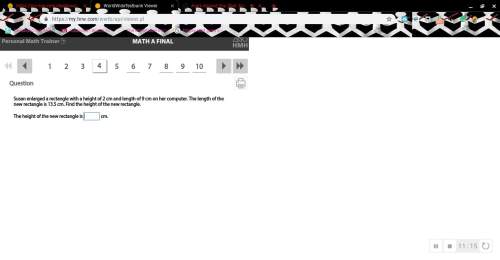
Mathematics, 12.10.2019 19:30 CM0
In the diagram, lines e and m are parallel to each other and lines p and q are transversals. use properties of special angles, formed by parallel lines and their transversals, to describe the relationship between the angles. note: figure is not drawn to scale.
e || m; lines p and q are transversals
6 and 4 are angles.
6 and 2 are angles.
5 and 7 are angles.
19 and 17 are angles.
9 and 11 are angles.
21 and 15 are angles.
17 and 14 are angles.
3 and 8 are angles.




Answers: 2


Another question on Mathematics


Mathematics, 21.06.2019 18:30
Can someone check if i did this right since i really want to make sure it’s correct. if you do you so much
Answers: 1

Mathematics, 21.06.2019 19:40
Which of the following three dimensional figures has a circle as it’s base
Answers: 2

Mathematics, 21.06.2019 20:40
In each of the cases that follow, the magnitude of a vector is given along with the counterclockwise angle it makes with the +x axis. use trigonometry to find the x and y components of the vector. also, sketch each vector approximately to scale to see if your calculated answers seem reasonable. (a) 50.0 n at 60.0°, (b) 75 m/ s at 5π/ 6 rad, (c) 254 lb at 325°, (d) 69 km at 1.1π rad.
Answers: 3
You know the right answer?
In the diagram, lines e and m are parallel to each other and lines p and q are transversals. use pro...
Questions

Biology, 23.10.2020 19:20

Biology, 23.10.2020 19:20

Mathematics, 23.10.2020 19:20

Social Studies, 23.10.2020 19:20

Mathematics, 23.10.2020 19:20

Health, 23.10.2020 19:20



Mathematics, 23.10.2020 19:20



English, 23.10.2020 19:20




Mathematics, 23.10.2020 19:20







